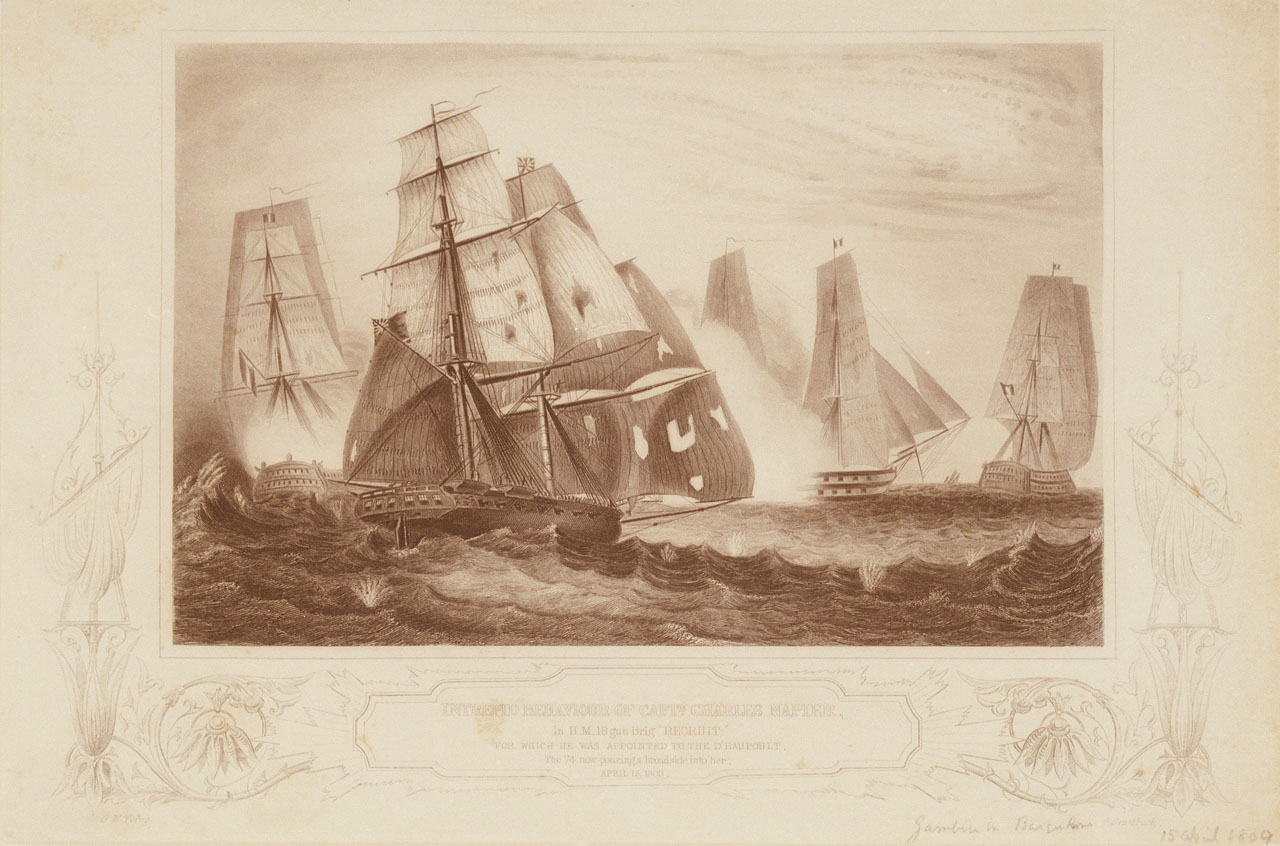|
French Frigate Félicité (1785)
''Félicité'' was a 32-gun frigate of the French Navy, lead ship of her class. Captured by the British Royal Navy and sold to the State of Haiti, she entered Haitian service as ''Améthyste''. French service In 1786, ''Félicité'' served as division flagship for Chef d'escadre Pâris de Soulanges in the 12-ship Escadre d'évolution. She was at Cherbourg when a naval review and a simulated naval battle took place as Louis XVI visited the harbour. In 1792, ''Félicité'' traveled to the Caribbean Sea. On 29 December, she took part in the capture of the royalist brig off Saint-Pierre. In September 1794 a French naval squadron comprising the razee under the command of ''lieutenant de vaisseau'' Arnaud, ''Vigilance'', ''Félicité'', ''Épervier'', and was cruising the West African coast, destroying British factories and shipping. They captured , which they sent back to France, and another Sierra Leone Company ship, , which they destroyed. These were only two of the many v ... [...More Info...] [...Related Items...] OR: [Wikipedia] [Google] [Baidu] |
Civil And Naval Ensign Of France
Civil may refer to: *Civic virtue, or civility *Civil action, or lawsuit *Civil affairs *Civil and political rights *Civil disobedience *Civil engineering *Civil (journalism), a platform for independent journalism *Civilian, someone not a member of armed forces *Civil law (other), multiple meanings *Civil liberties *Civil religion *Civil service *Civil society *Civil war *Civil (surname) {{disambiguation ... [...More Info...] [...Related Items...] OR: [Wikipedia] [Google] [Baidu] |
Factory (trading Post)
Factory was the common name during the medieval and early modern eras for an entrepôt – which was essentially an early form of free-trade zone or transshipment point. At a factory, local inhabitants could interact with foreign merchants, often known as factors. First established in Europe, factories eventually spread to many other parts of the world. The origin of the word ''factory'' is ( pt, feitoria; nl, factorij; french: factorerie, ). The factories established by European states in Africa, Asia and the Americas from the 15th century onward also tended to be official political dependencies of those states. These have been seen, in retrospect, as the precursors of colonial expansion. A factory could serve simultaneously as market, warehouse, customs, defense and support to navigation exploration, headquarters or ''de facto'' government of local communities. In North America, Europeans began to trade with the natives during the 16th century. Colonists created fact ... [...More Info...] [...Related Items...] OR: [Wikipedia] [Google] [Baidu] |
Gaspard (privateer)
Gaspard is a Francophone male given name or family name, and may refer to: People Given name * Gaspard II Schetz, Lord of Grobbendonk * Gaspard Abeille (1648–1718), French poet * Gaspard André (1840–1896), French architect * Gaspard Augé (born 1979), one half of French electronic music duo Justice * Claude Gaspard Bachet de Méziriac (1581–1638), French mathematician * Gaspard Bauhin (1560–1624), Swiss botanist * Gaspard Laurent Bayle (1774–1816), French physician * Gaspard Bobek (1593–1635), Croatian Roman Catholic prelate * Gaspard Auguste Brullé (1809–1873), French entomologist * Gaspard Jean-Baptiste Brunet (1734–1793), French military commander * Gaspard Bureau (died 1469), French ballistics expert and inventor * Gaspard de Chabrol (1773–1843), French politician and government official * Gaspard Adolphe Chatin (1813–1901), French physician, mycologist and botanist * Pierre Gaspard Chaumette (1763–1794), French Revolutionary leader * Gaspard I de C ... [...More Info...] [...Related Items...] OR: [Wikipedia] [Google] [Baidu] |
Jérôme Maximilien Borgella
Jerome (c.347–420) was a priest, confessor, theologian and historian from Dalmatia. Jerome may also refer to: People Given name * Jerome (given name), a masculine name of Greek origin, with a list of people so named * Saint Jerome (other), several saints and other topics named for them Surname * Cameron Jerome (born 1986), English footballer * Chauncey Jerome (1793–1868), American clockmaker and politician * David Jerome (1829–1896), governor of Michigan * Harry Jerome (1940–1982), Canadian track and field runner * James Jerome (1933–2005), Canadian judge and politician * Jennie Jerome, Lady Randolph Churchill (1854–1921), mother of UK Prime Minister Winston Churchill * Jerome K. Jerome (1859–1927), British author * Jerry Jerome (boxer) (1874–1943), Australian boxer * Jerry Jerome (saxophonist) (1912–2001), American musician * Leonard Jerome (1817–1891), American financier * Randolph Jerome (born 1978), Guyanese soccer player * Ty Jerome (born 19 ... [...More Info...] [...Related Items...] OR: [Wikipedia] [Google] [Baidu] |
Haitian Navy
The Armed Forces of Haiti (french: Forces Armées d'Haïti—FAd'H), consisted of the Haitian Army, Haitian Navy (at times), the Haitian Air Force, Haitian Coast Guard, (ANI) and some police forces (Port-au-Prince Police). The Army was always the dominant service with the others serving primarily in a support role. The name of Haiti's military was changed from the Garde d'Haiti to the Forces Armées d'Haïti—FAd'H in 1958 during the rule of François Duvalier. After years of military interference in politics, including dozens of military coups, Haiti disbanded its military in 1995. On 17 November 2017, the armed forces were remobilized by President Jovenel Moise. The President suspended the previous executive orders by then President Jean-Bertrand Aristide who suspended and disbanded the armed forces on 6 December 1995. History Origins The origins of Haiti's military lie in the Haitian Revolution. A decade of warfare produced a military cadre from which Haiti's early ... [...More Info...] [...Related Items...] OR: [Wikipedia] [Google] [Baidu] |
Henri Christophe
Henri Christophe (; 6 October 1767 – 8 October 1820) was a key leader in the Haitian Revolution and the only monarch of the Kingdom of Haiti. Christophe was of Bambara ethnicity in West Africa, and perhaps of Igbo descent. Beginning with the slave uprising of 1791, he rose to power in the ranks of the Haitian revolutionary military. The revolution succeeded in gaining independence from France in 1804. In 1805 he took part under Jean-Jacques Dessalines in the capturing of Santo Domingo (now Dominican Republic), against French forces who acquired the colony from Spain in the Treaty of Basel. After Dessalines was assassinated, Christophe retreated to the Plaine-du-Nord and created a separate government. On 17 February 1807, he was elected president of the State of Haiti, as he named that area. Alexandre Pétion was elected president in the south. On 26 March 1811, Christophe created a kingdom in the north and was later proclaimed Henry I, King of Haïti. He also created a n ... [...More Info...] [...Related Items...] OR: [Wikipedia] [Google] [Baidu] |
Guadeloupe
Guadeloupe (; ; gcf, label=Antillean Creole, Gwadloup, ) is an archipelago and overseas department and region of France in the Caribbean. It consists of six inhabited islands—Basse-Terre, Grande-Terre, Marie-Galante, La Désirade, and the two inhabited Îles des Saintes—as well as many uninhabited islands and outcroppings. It is south of Antigua and Barbuda and Montserrat, north of the Commonwealth of Dominica. The region's capital city is Basse-Terre, located on the southern west coast of Basse-Terre Island; however, the most populous city is Les Abymes and the main centre of business is neighbouring Pointe-à-Pitre, both located on Grande-Terre Island. It had a population of 384,239 in 2019.Populations légales 2019: 971 Guadeloupe INSEE Like the other overseas departments, ... [...More Info...] [...Related Items...] OR: [Wikipedia] [Google] [Baidu] |
Fireship
A fire ship or fireship, used in the days of wooden rowed or sailing ships, was a ship filled with combustibles, or gunpowder deliberately set on fire and steered (or, when possible, allowed to drift) into an enemy fleet, in order to destroy ships, or to create panic and make the enemy break formation. Ships used as fire ships were either warships whose munitions were fully spent in battle, surplus ones which were old and worn out, or inexpensive purpose-built vessels rigged to be set afire, steered toward targets, and abandoned quickly by the crew. Explosion ships or "hellburners" were a variation on the fire ship, intended to cause damage by blowing up in proximity to enemy ships. Fireships were used to great effect by the outgunned English fleet against the Spanish Armada during the Battle of Gravelines, [...More Info...] [...Related Items...] OR: [Wikipedia] [Google] [Baidu] |
HMS Netley (1798)
HMS ''Netley'' was launched in 1798 with an experimental design. During the French Revolutionary Wars she spent some years on the Oporto station, where she captured many small privateers. The French captured her in 1806, early in the Napoleonic Wars. They lengthened her and she became the 17-gun privateer ''Duquesne''. In 1807 the British recaptured her and the Royal Navy returned her to service as the 12-gun gun-brig HMS ''Unique''. She was expended in an unsuccessful fire ship attack at Guadeloupe in 1809. Design ''Netley'' was built to a design by Sir Samuel Bentham. She was a modified and somewhat enlarged version of , a smaller version of his ''Dart''-class vessels. Bentham's designs featured little sheer, negative tumblehome, a large-breadth to length ratio with structural bulkheads, and sliding keels. They were also virtually double-ended. French Revolutionary Wars ''Netley'' was commissioned in 1798 under the command of Lieutenant Francis Godolphin Bond. Her first rec ... [...More Info...] [...Related Items...] OR: [Wikipedia] [Google] [Baidu] |
Martinique
Martinique ( , ; gcf, label=Martinican Creole, Matinik or ; Kalinago: or ) is an island and an overseas department/region and single territorial collectivity of France. An integral part of the French Republic, Martinique is located in the Lesser Antilles of the West Indies in the eastern Caribbean Sea. It has a land area of and a population of 364,508 inhabitants as of January 2019.Populations légales 2019: 972 Martinique INSEE One of the , it is directly north of Saint Lucia, northwest of |
En Flûte
''En flûte'' (French: "as a fluyt") is a French naval expression of the Age of Sail to designate the use of a warship as a transport with reduced armament.Willaumez, p. 294 Some warships, ships of the line or frigates, were occasionally used with limited artillery, by reducing the number and calibre of their guns. Since ships have a limited amount of cargo space, they may be armed ''en flûte'' to make room for other cargo, such as troops and ammunition. That reduces the ship's ability to defend herself if attacked. The term emerged from the French name for a type of ship – the cargo-carrying ''flûte'' used extensively as a mercantile ship or as a naval auxiliary vessel. In turn this derived from the Dutch name ''fluyt'', probably the most common type of cargo-carrier during the seventeenth century – when in English usage it was commonly rendered as a flyboat. This tactic was most relevant in the Age of Sail, when gun decks took up most of the space on a warship above the w ... [...More Info...] [...Related Items...] OR: [Wikipedia] [Google] [Baidu] |
Troude's Expedition To The Caribbean
Troude's expedition to the Caribbean was a naval operation by a French force under Commodore Amable-Gilles Troude during the Napoleonic Wars. The French squadron departed from Lorient in February 1809 in an attempt to reach and resupply the island colony of Martinique in the Caribbean Sea, then under invasion from a British expeditionary force. The force arrived much too late to affect the outcome of the successful invasion and took shelter from a British squadron in the Îles des Saintes, where they were blockaded by part of the British invasion fleet, led by Vice-Admiral Sir Alexander Cochrane. Two weeks after the French ships arrived, British troops invaded and captured the Saintes, constructing mortar batteries to bombard the French squadron. With his position unsustainable, Commodore Troude decided to break out. Attempting to escape under cover of darkness on 14 April, the French squadron was spotted by a number of small British ships stationed close inshore. These ships r ... [...More Info...] [...Related Items...] OR: [Wikipedia] [Google] [Baidu] |





